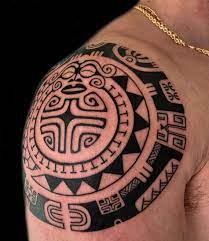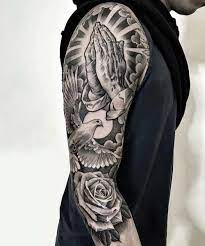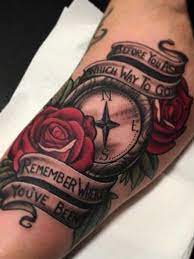
Tattoos in Polynesia:
Tattoos were widely recognized and honored across Polynesia as symbols of wealth and power. They also served to illustrate an individual’s life story. In Tonga, men were tattooed from their waist to the knees with geometric tattoos applied by highly trained priests. Women wore delicate tattoo designs on their hands and lower extremities.
Samoan Tattoos:
Samoan tattoos, known as pea, symbolize status, power, honor, respect, and pride in Samoan culture. A pea is an extensive tattoo that covers most or all of the back and extends toward the knees. Legend has it that tattooing was brought to Samoa by two female Siamese twins from Fiji. A pea is considered a mark of respect and essential for Samoan men.
Tongan Tattoos:
Tongan Tattoos are an iconic representation of Tongan culture. They are scattered all over the body and represent various aspects of Tongan heritage. Traditional Tongan tattoos are created using hand-tapping and have a unique and personalized appearance. Tatau dancing has experienced a revival in Tonga due to tourism growth.
Marquesas Tattoos:
Marquesan Tattoos symbolize status, lineage, personal achievement, and protective powers in Marquesas culture. The designs are intricate and often challenging to interpret. They hold healing properties and celebrate the rich heritage and vibrant culture of the Marquesas islands.
Hawaiian Tattoos:
Hawaiian Tattoos are known for their full-body designs. Different symbols, such as turtle shells and Tiare flowers, hold various meanings in Hawaiian culture. Tattoos were once indicators of adulthood, genealogical heritage, and social standing in Hawaii.

